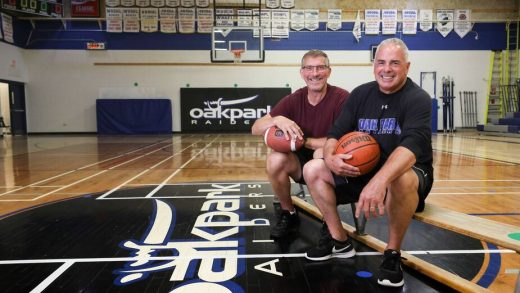
Abigail Dougherty/Stuff
Pak ‘n Save is trialling the use of body cameras in its stores.
At least one Pak‘nSave is trialling the use of body cameras as retail crime continues to rise.
At Pak’nSave Cameron Rd in Tauranga, staff have been fitted with front-facing cameras, similar to what prison and police officers wear, in an attempt to deter and catch disorderly behaviour.
A sign at the front of the store alerts shoppers that the technology is being used.
Pak‘nSave stores, which are owned by Foodstuffs, are locally owned and operated.
READ MORE:
* More than 300 ‘dodgy’ supermarket deals uncovered by Consumer NZ
* Cyclone Gabrielle: South Island supermarkets will stay stocked up, but some mail delayed
* Supermarkets selling beer cheaper than water being investigated by police
A Foodstuffs spokesperson confirmed to Stuff it was trialling the use of body cameras.
Foodstuffs spokesperson Emma Wooster told NZ Herald that this meant stores used a variety of different security measures to keep teams and customers safe, and the tools used at each store vary depending on the needs of the community.
It ranged from CCTV cameras, uniformed and plain-clothed security team members and training to de-escalate situations.
“A small portion of stores have chosen to use body cams as another tool to help keep team members safe.”
She did not state how many stores were using the technology but said it was a “a sad reality that retail crime is on the rise”.
1 NEWS
More money will go to providing fog cannons, with a focus on the two cities hit hardest – Auckland and Hamilton.
According to Foodstuffs data “serious incidents” at it stores were up 246% since 2020 and of 9700 offenders last year, nearly 2500 were likely to be repeat offenders.
It is understood Countdown would also look to trial body cameras.
“We are still looking at how these could be used as a tool to reduce aggression and violence,” a spokesperson told the Herald.
Consumer NZ has had previous concerns about the use of cameras to prevent crime in supermarkets, with Pak’nSave considering facial recognition technology (FRT) as a crime prevention measure.
Simon O’Connor/Stuff
Body camera similar to this will be worn by Pak ‘n Save staff at some stores.
FRT involved the identification of a person based on an analysis of their facial features. Artificial intelligence programmes identify and map facial features to create a face print, which is compared to those on a database to find a match.
Last November, a Foodstuffs spokesperson told Stuff there had been a 31% increase in the rates of theft, burglary, robbery, assault and other aggressive, violent and threatening behaviour across its stores.
Stabbing attacks had also occurred at a Dunedin Countdown in May last year and Countdown in LynnMall in Auckland last September.
But Consumer NZ chief executive Jon Duffy was “concerned” about this kind of surveillance technology in supermarkets and how the information was being used and stored.
Retail crime rates have been on the rise for the past four years and costs retailers $1 billion each year.
Police data shows shoplifting crimes (robbery, burglary and theft) increased to an all time high last year, with police receiving 241,638 reports. That was up by almost 41,000 compared with the 2021 total of 208,445.
To combat crime police launched a retail crime protection programme, a National Retail Support Investigation Unit, while the Government established funding towards the installation of fog cannons for small retailers.


